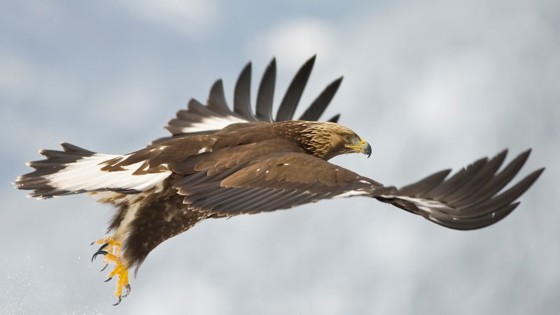Future management of the golden eagle in Norway
Historical archive
Published under: Solberg's Government
Publisher: Ministry of Climate and Environment
News story | Date: 11/06/2016
The future management of golden eagles has been debated in the Norwegian Parliament. How to ensure the needs of indigenous people (Sami people) and livestock was at the heart of the debate the 6th of June this year.
The Parliament concluded by asking the Government to implement management projects and to publicly consult on amending the regulations on culling of golden eagles. The decision was made by the Parliament on the basis of a private proposal from MPs.

Strictly protected species
The golden eagle is a strictly protected species under the Bern Convention. However, controlled culling may take place if certain conditions are met. Norway is firmly committed to the Bern Convention and will still aim to ensure the special protection of the golden eagles. The current population goal of 850-1200 territorial pairs will be maintained.
Current research and knowledge about golden eagle years shows that both livestock and semi-domesticated reindeer are exposed to predation by golden eagles. In the Fosen area a research project has revealed that the golden eagle is one of several factors explaining the loss of sheep.
In Troms there is so far no research to confirm the same pattern as in Fosen, but local sheep farmers and Sami people claim that the golden eagle is an important factor explaining the loss of livestock also in this area.
Loss of domestic animals
The Norwegian Parliament has asked the Government to publicly consult on amending the regulations on the culling of golden eagles, in order to reduce the loss of domestic animals and semi-domesticated reindeer, in areas where the losses are particularly high. Furthermore, Parliament has asked the Government to allow a trial cull in the Fosen area and Troms.
At the same time, the Parliamentary decision clearly states that the current population goal of 850-1200 territorial pairs, shall be maintained. The current population is within this range, hence the potential scope for culling is narrow.
Within the narrow boundaries laid down by the Parliamentary decision, and strictly in keeping with our international obligations under the Bern convention, the Government will now embark on preparing a draft regulation for public consultation.
Sustainable management of species
The Ministry of Climate and Environment considers it important to design the projects in a way that ensures the sustainable management of the species and at the same time prevent severe damage on domestic / semi domestic animals. In this regard, it is important that scientists collect information also about other possible important factors explaining the loss of sheep and semi-domesticated reindeer, which is not attributed to large carnivores, to make sure the management is as precise as possible.
Given the controversial nature of the matter, it will also be important to ensure a thorough and comprehensive public consultation process where all interested parties are heard. As an example, the tourism industry has voiced its clear opposition to the proposal, since Norwegian wildlife is a key asset for Norway as a tourist destination.
The Ministry of Climate and Environment points out that under no circumstances will culling be allowed to an extent that threatens the Norwegian population of the golden eagle. The current population goal of 850-1200 territorial pairs, shall continue to apply. This is in accordance with Norway´s obligations under the Bern Convention.